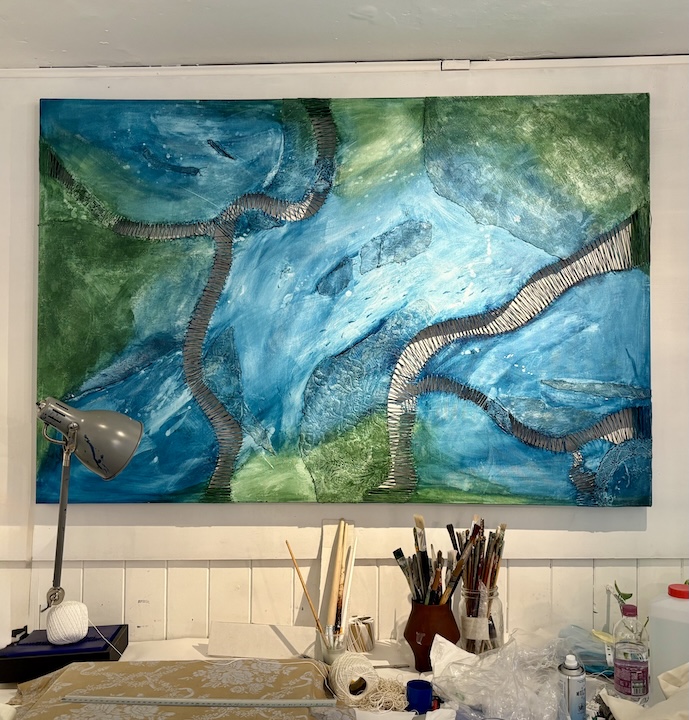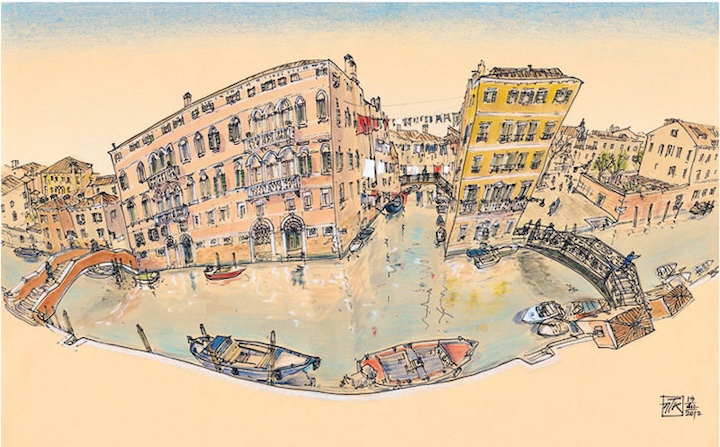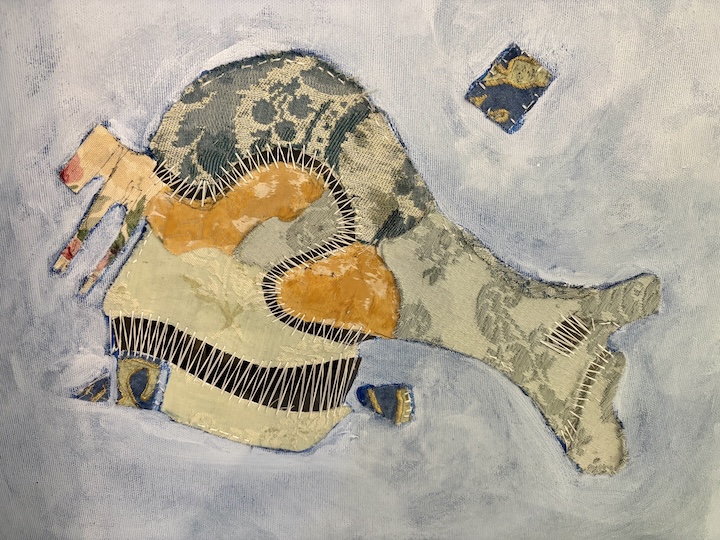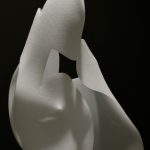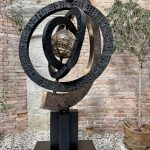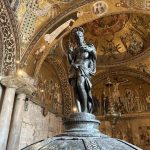Luana Segato, better known as Luse, opened her Venice atelier in 2013 in Dorsoduro, along the Calle lunga San Barnaba. This little place is inundated with light with its windows and glass door. I love passing by and I always cast a look in, trying to see what is hung on the wall or simply lies on the floor, or what stands on a bookshelf:
Luana Segato Luse’s paintings are unique. When looking at her work, you can see the lagoon, the city of Venice and its canals, birds and fish. Her atelier is like a cradle where the lagoon colors and their special shimmering light meet with lines and forms.
Luana Segato Venice masters
This place used to be the workshop of a violin maker and then it became the atelier of Davide Battistin, one of masters Luana Segato studied with. You can see the wonderful work by Battistin along Calle della Mandola, by the Lineadacqua Gallery: https://lineadacqua.gallery/it/artisti/davide-battistin You may also remember his exhibition at the Querini Stampalia foundation a few years ago, in the room designed by Carlo Scarpa.
The evanescent and dreaming character emerges from Battistin’s representation of Venice: truly emotional, just Venice, its lagoon water and no human presence.
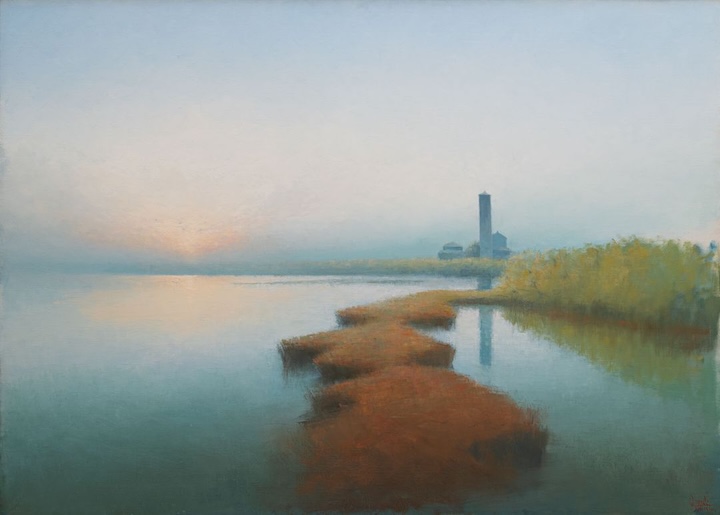
Davide Battistin, Torcello (2022), Courtesy of Lineadacqua Gallery, Venice (https://it.lineadacqua.it/davide-battistin-dipinti.html)
Luana Segato “Luse” in her research dedicated much work also to learning the drawing and graphics technique with Nelson Kishi Takahiro (Codex atelier). Kishi moved from Brazil (but has Japanese origins) to Venice many years ago. His workshop will enchant everyone when you cross the bridge opposite Campo Ghetto Nuovo in Cannaregio, along Fondamenta degli Ormesini.
Kishi’s works constantly change the perspective while representing Venice. My favorite is the bird’s eye point of view. When portrayed from above with a few black lines, Venice’s squares and monuments become unfamiliar. The people start swarming around. You can find a beautiful interview here: www.naturallyepicurean.org/post/codex-venezia-an-interview-with-nelson-kishi
Luana Segato “Luse” also studied at the Centro Internazionale di Grafica in Venice where she could confront with different artists and graphic designers. There she could admire and learn from the watercolors by Matilde Dolcetti, too.
What a beautiful and international network, don’t you think?
The colors in Luana Segato Luse painting
When interviewing Luana Segato, we started talking about the green and blue colors of the lagoon water. She marked how they constantly change. When crossing the bridge connecting the mainland to Venice —which she does quite often as she lives in Mogliano Veneto—, the water on one side of the bridge has one color, but if you look at the other side, the color is different.
Fog, clouds, currents, shallow and deep water, tides, wind: all these natural elements modify our perception of the lagoon colors. Luana Segato tries to catch their spirit and put it down on the canvas. The colors she uses are the colors she can see. She is searching for them, constantly.
The action of painting for Luana Segato is fast, instinctive and should not take longer than a day, as the moment of meditation lies in the action of sewing and embroidering the canvas.
Sewing and embroidery in Luana Segato’s art
This is in fact something that distinguishes her works: the use of the ancient (and very female) technique of sewing and embroidering with a needle and some yarn.
Unlike the painting action, sewing is a repetitive, slow and long process, which requires a lot of patience and constance. Luana Segato uses a thick, strong needle as the canvas she is sewing can be multilayered.
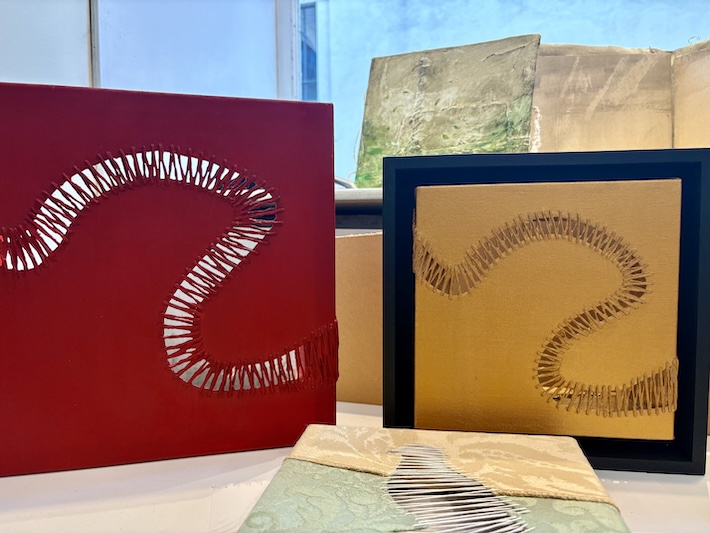
Piccolo Canal Grande oro 2024 tec. mista su tela cm 20×20 e Canal Grande Rojo 2023 olio su tela cm 30×30 — Grand Canal in red or gold by Luana Segato Luse, Venice
I have always loved the saying in the English language that spinning a good yarn means to tell a good story. This is what Luana Segato also does. She tells the story of Venice and its waters, fish and birds.
The sewing technique is used both in her paintings and in her artist’s books. The yarn is part of the art work, it’s the action of the artist and at the same time it’s the material which connects the different parts of the works of art. In fact, Luana Segato’s works are, to start with, made of pieces that are detached the one from the other. You could compare them to collage.
Artist’s books
Sometimes the action of sewing compares to the traditional action of a book binder. The pages of her artist’s books are views of Venice and its islands, skyline and monuments, evanescent. However, this is not always the case, because the act of sewing is not just binding the different pages of the artist’s book, but the yarn is also sewing the several pieces of canvas: the stitches become graphic lines and part of the drawing.
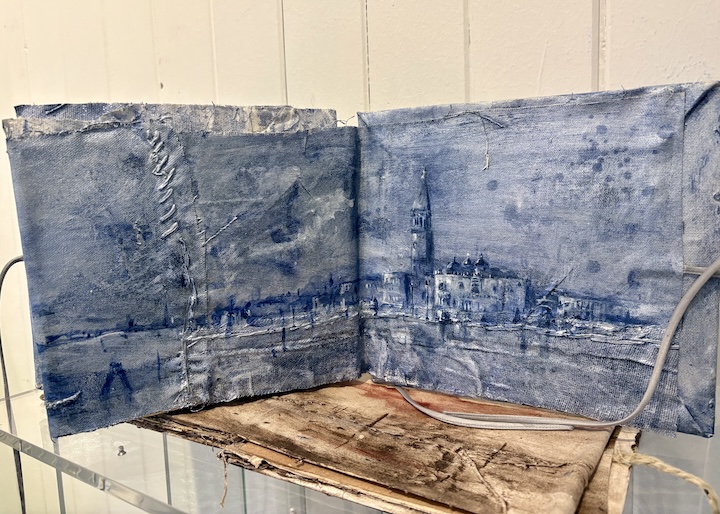
Libro d’artista “Piccolo blue silver” 2019 tec. mista su tela e tessuto trattato, libro chiuso cm20x22,50, aperto cm135x20 by Luana Segato, Venice
The canvas can be of different origins, but it’s usually recycled. Luana Segato is sent pieces of canvas from other women, carpets, bedspreads and linen. Something in her work will remind you of patchwork. But with a difference. Her works often introduce us to hollow space.
Holes, hollow space, seams
Since 2006 in her research, Luana Segato has developed this idea of sewing canvas, starting from a hole in a painting representing poppy flowers. She started making that hole bigger and then sewing it. Several attempts, some less, some more successful. Cutting the canvas —an action that cannot but make us think of Lucio Fontana’s art— but then sewing it together, leaving that hollow space visible, letting the light come in, create chiaroscuro effects.
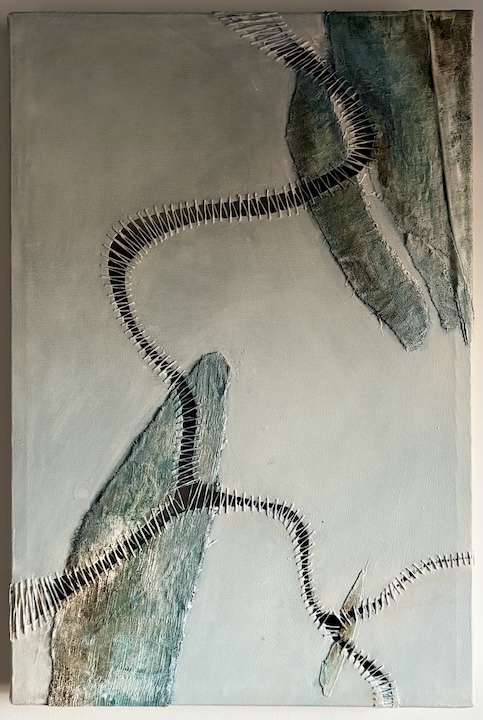
Ghebo “Nebbia” 2024 tec. mista su tela e tessuto trattato cm 40×60, 2024 by Luana Segato Luse, Venice
No wounds, but seams, almost a surgical suture. An ancient gesture, that of sewing, that recalls the female art of cutwork, originated in Italy at the time of the Renaissance, as far as the 14th century. Cutting out pieces and then fill in the spaces thus created with stitches or joining the pieces themselves together by connecting bars of thread: the Grand Canal or the meandering waterways of the lagoon salt marshes in this way emerge in an extraordinary way.
I don’t know what will come to Luana Segato’s mind in the future, but I am sure there will be something different, something to talk about in her atelier in Venice.
by Luisella Romeo
registered tourist guide in Venice, Italy
www.seevenice.it



